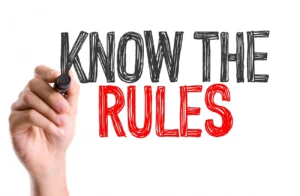 Part of an ongoing series of 5e Rules notes.
Part of an ongoing series of 5e Rules notes.
Okay, this is going to meander a bit.
Magical Water vs Magical Fire.
Can a magical water spell (or magical air/gust spell) drown (blow out) a magical fire spell?
The idea of this sort of encounter is natural, but the guidance from the rules is unclear.
Suggestion: Things can be countered unless it says they can’t be.
Take a Continual Flame spell:
The effect looks like a regular flame, but it creates no heat and doesn’t use oxygen. A continual flame can be covered or hidden but not smothered or quenched.
There is explicit text here saying that such flames cannot be smothered or quenched (largely because it seems that this is not a true flame, but an illusory flame light source). Fine. If something is written with such an immunity, they are immune. If not, they are as quenchable as normal flames.
Suggestion: Things are only countered if it says they are.
Rules As Written (RAW) philosophy is pretty literal. If a spell has an effect, the spell spells that out in its description. If it’s not mentioned, it’s not an actual effect.
So, for example, Thaumaturgy, Gust, Windwall, Create/Destroy Water, and Prestidigitation all explicitly state they can snuff flame. Tidal Wave, too. If a spell doesn’t mention that as an effect, it doesn’t happen.
(Note that Tidal Wave and others often specify “unprotected flames” — not drawing a distinction between a magical vs natural flame.)
Suggestion: Things can be countered if the counter-spell is a higher level than the original spell.
This is inspired by the Light/Dark setup. Darkness (2nd level) notes:
Nonmagical light can’t illuminate it. … If any of this spell’s area overlaps with an area of light created by a spell of 2nd level or lower, the spell that created the light is dispelled.
So there’s (in this case) some sort of “This quashing power is equal or greater to the power being quashed, so score” effect. This is a potential problem, though, because …
Curse you, Magic Items!
Magical items (or magical features of dungeon rooms) are often written without any indication of what spell effect they use, or what they are/aren’t immune to, or what level such a spell would be. Take the case of the magical burning spears wielded by Razorblasts in the Princes of the Apocalypse campaign. The Razorblasts can turn them on or off (though it isn’t indicated how), but there’s not even instruction on what would happen if a party member picked one up and wanted to use one. Some of the Earth Cult weaponry in that module is explicitly Earth Cult magic-specific, but that’s not the case with the fire effects noted. Are they flames an attribute of the Razorblasts, worship of Imyx, or the spears themselves? Only the DM know for sure (or guesses quickly).
There isn’t even a canonical weapon rule or example to draw from for something like those spears. The Flame Tongue weapons do more damage than the spears did. The Flame Blade 2nd level spell does as well (and is a weapon substitute, not enhancement).
Based on the above, the magical effect on the spears (which was +1d6 fire) is some sort of specialized elemental 1st level effect.
Okay, so it should be arguably easy to quench them, right?
But magic fire is not the same as physical fire. If you throw a bucket of water on a torch, the torch goes out, and trying to re-light it will be a pain because the fuel (the torch) is wet. But a blade that can have a magical fire turned on — well, the bucket of water will arguably quench it, but once the water is gone, it can be retriggered, unless the item’s rules have some weird “once a day” rule.
So what does this all mean?
It means doing some quick vamping as GM when someone creates one of these conflicts.
For example, you are in a room that has magical columns that, on a command word, begin to glow with a fiery heat, doing damage to anyone nearby. The amount of damage is spelled out. Nothing else is. (This, too, is from Princes of the Apocalypse). Jackie the Cleric casts a Big Wall of Water Spell (whatever) at the opponents in the in a room with magical columns.
It should have no direct effect on the magical columns, though, because those aren’t a flame source. Color text of special effects of steam and maybe therefore vision obscuring occurs. (Indeed, “I want to cover our withdrawal by shooting a big wall of water at the magma pillars” is a Rule-of-Cool clever idea that would probably net some Inspiration.)
It also knocks out the flames of the magical spears. But as of the opponents’ next turn start, they can reignite them because the water is not existing in perpetuity about their spearheads, and the momentary spell only overrides the permanent enchantment temporarily.
What, by the way, makes damage “magical”?
Slight digression, though it’s related to the topic. Let’s say William drops a Tidal Wave on people’s heads. Is that magical damage?
I mean, obviously, manifesting a huge block of water in the middle of a room is a magical effort (it’s a magical spell, in fact), but is the bludgeoning damage produced “magical”? Or is it effectively the same as produced by a mechanical trap that dumps a similar huge block of water over people?
5e goes with the following rubric to determine if something (including damage) is magical (via the Sage Advice Compendium):
Determining whether a game feature is magical is straightforward. Ask yourself these questions about the feature:
- Is it a magic item?
- Is it a spell? Or does it let you create the effects of a spell that’s mentioned in its description?
- Is it a spell attack?
- Is it fueled by the use of spell slots?
- Does its description say it’s magical?
If your answer to any of those questions is yes, the feature is magical.
So is a Tidal Wave‘s attack is considered magical for purposes of “immune to bludgeoning damage not from a magical attack?” The answer is, it seems, “Yes,” because, for example, it is fueled by the use of spell slots. Even though, yes, there is no functional difference between it and a ceiling trap that drops a similar amount of water in a similar pattern.
What about the Infamous Tidal Wave vs Fire Elemental debate?
What happens if you cast a Tidal Wave at a Fire Elemental?
This is a debate only because
- Tidal Wave has a calculable volume (but weird physics and dynamics to figure out impacts on surface areas, etc.) that mean you only take a fraction of that), and
- Fire Elementals have a unique vulnerability / damage accrual measured by gallon and/or depth of water.
I have seen Reddit calculations from 6 hp damage to 25,000ish hp damage from such an attack, depending on the estimated surface area of a Fire Elemental and assertions as to how TW attacks work.
Rather than a bunch of crazy calculations (which are anathema to 5e), I as the DM would likely say, “It does its normal Bludgeoning damage (4d8), which the Fire Elemental Resists. However, it does double that amount (8d8) in Cold damage because the Fire Elemental is made of fire and is vulnerable to water. Also, the Fire Elemental doesn’t go Prone because they are immunite to that Condition.”
So probably no insta-kill for a 3rd level spell, sorry, but a butt-load of insta-damage, multiplied by every Fire Elemental in the area.
A OneD&D Note
 This isn’t actually confirmed, but looking at the materials released so far regarding race-based magic, it looks like those rules may address some of the above, not just because it’s all kind of confusing, but because rather than arbitrary magical effects, documented magical spells are being used instead. That’s actually a good thing. Hopefully they will follow through with clearer answers and mechanics for all this.
This isn’t actually confirmed, but looking at the materials released so far regarding race-based magic, it looks like those rules may address some of the above, not just because it’s all kind of confusing, but because rather than arbitrary magical effects, documented magical spells are being used instead. That’s actually a good thing. Hopefully they will follow through with clearer answers and mechanics for all this.

One thought on “D&D 5e Rules – Element vs Element!”